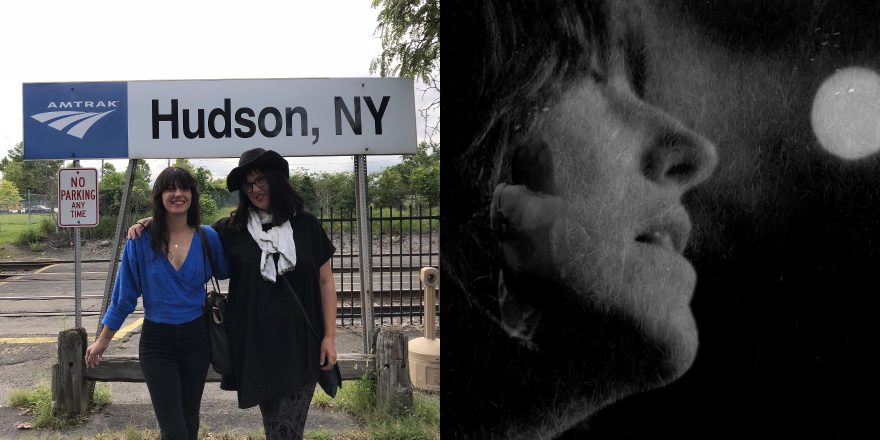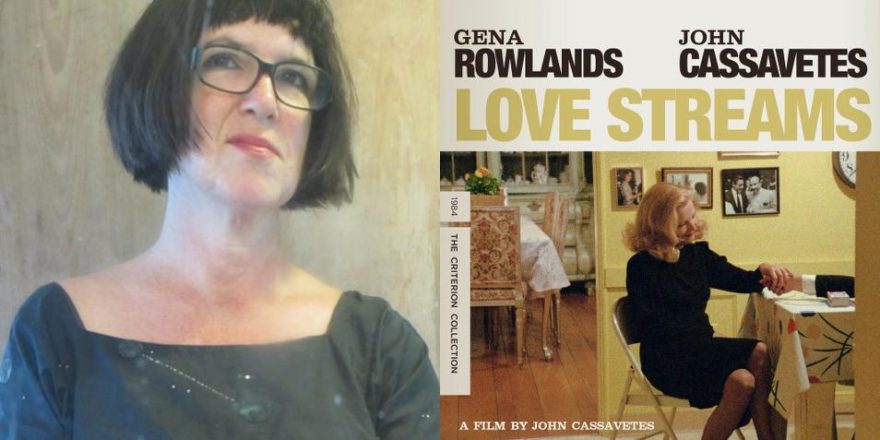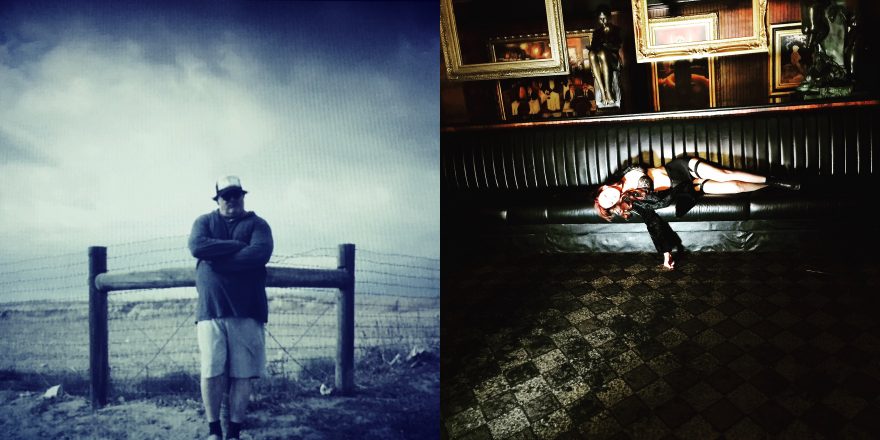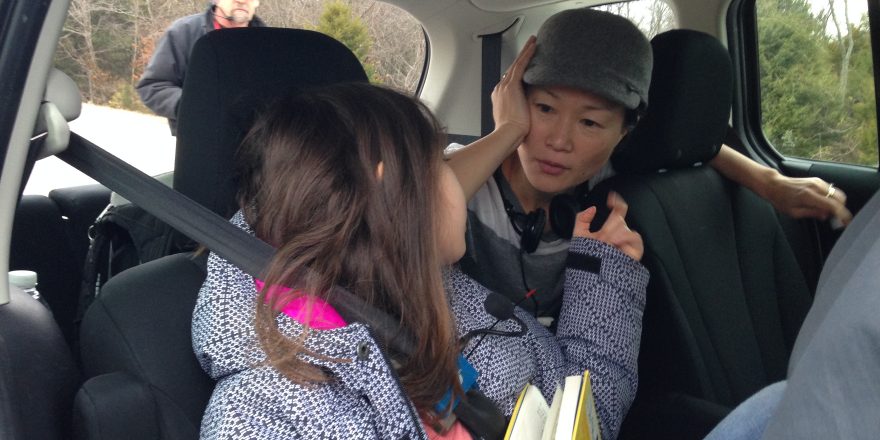For a couple of years, every email I got from the singer-songwriter Sharon Van Etten closed with “You cannot save people, you can only love them.” – Anaïs Nin. (Recently she swapped it for “The object of art is to give life shape,” a sentiment I also share.) If I had to choose a similar parting salvo for my own emails, it would probably be “Keep a pew roped off in the church of your heart for the obsessed,” which I think is a quotation from Emily Dickinson, although it might be Flannery O’Connor.
Exploring passion and its attendant risks is but one of the interests Sharon Van Etten and I have in common. Another is a conviction in the power of the unconscious, and the improbable ways it can materialize into conscious expression. A lot of Sharon’s songs feel like they arise from some inexorable place buried deep in her psyche, and are being mysteriously exhumed as she sings them. I wonder if she can say exactly how that happens. Probably not, and I’d never ask.
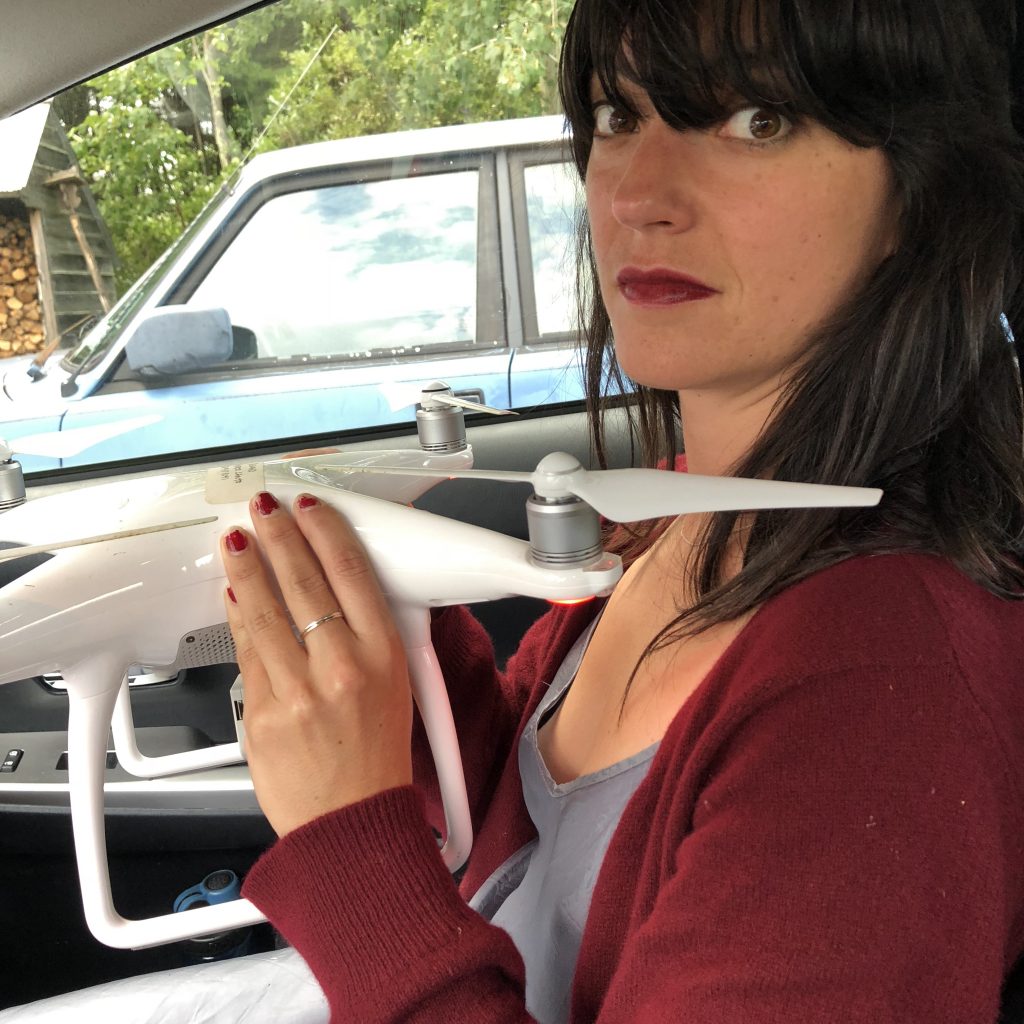
It had been nearly a quarter century since I’d directed a music video when Sharon invited me this past spring to take on a track from her forthcoming album, Remind Me Tomorrow. This was, of course, an act of faith. We’d met when I approached her to score my 2016 film, Strange Weather, and subsequently become friends. Along the way, she had gotten pregnant and had a baby, at the exact same age I had gotten pregnant and had my first baby, 20 years previously.
Sharon filled me in on this impending event by showing me a sonogram mere minutes before I stepped onstage in front of a sizable audience to introduce Strange Weather at its premiere at the Toronto International Film Festival. This felt like the logical conclusion to dialogues about birth that began back in the cutting room with my editor Madeleine Gavin whenever Sharon came to visit us. I can still picture Sharon’s sly smile as she turned her phone around and held it out: a perfect, and perfectly timed, offering.
The maternal experience only bonded us further in some molecular understanding of how art and childrearing have to find a way to coexist in a creative female, or else (at the risk of sounding melodramatic) she’ll perish. It also spoke to some implicit sense of personal history as a loop, and how ideas, images and even specific people (or their familiars) often repeat themselves in your life, especially when you’re not actively aware that they might. Certainly that was the case with directing the “Jupiter 4” video with and for Sharon.
Back in the day – before I made feature films, taught screenwriting, got married and had kids – I directed clips for R.E.M., Aimee Mann, Wilco, Everything but the Girl, Throwing Muses and Vic Chesnutt, among others. All of those videos were made intimately and came out of collaborative dialogues between me and the artists involved. I never was particularly interested in a career as a music video director; it was more about the joy of creating something for bands I listened to constantly, plus having fun working with like-minded souls. It had been so long since I’d delved into this arena, I called up Mark Pellington, still active in the field, and asked him if music videos today are made the same way we made them in the 1990s, when we both got started. He laughed and said, “Yes, except the budgets are way smaller, and now you have drones.”
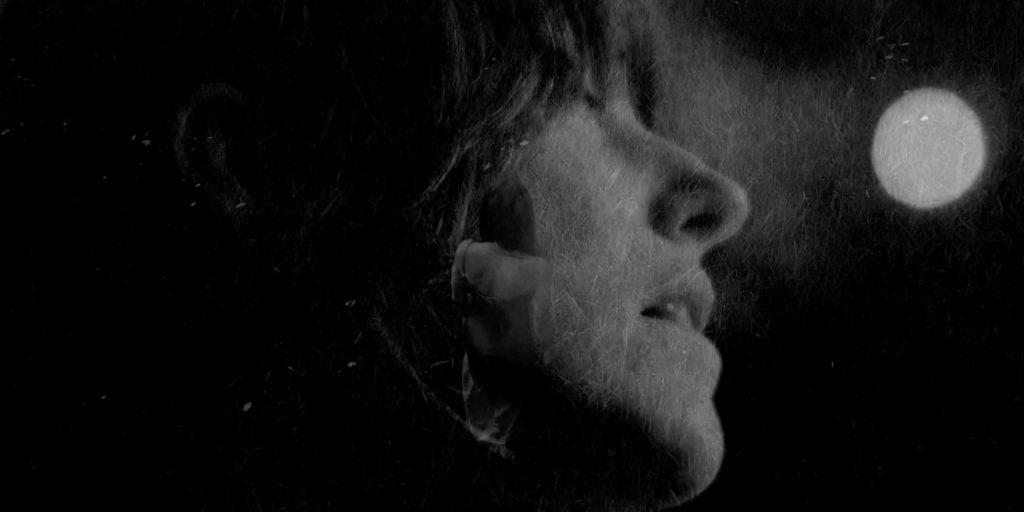
“Jupiter 4” is a love song that sounds like it was recorded in a haunted house: richly ambient, mercurial, hypnotic. It’s a fulsome declaration of a love that is “so real,” and the song soars on the bliss of presumed erotic and spiritual connection, but there’s a dark pulsation below its surface – a reminder of the potentially destructive aspects of delivering oneself over to desire. When Sharon sings “Baby, baby, baby” in the chorus (one of pop music’s most timeworn call-outs, but she makes it sound newly urgent), it’s hard to tell if she’s talking to someone who’s standing right next to her, someone she could reach out and touch, or someone she’s tracking who might always remain frustratingly remote. The articulation of desire is both absolutely certain, and vulnerable, confident and hesitant, and unashamed of those inherent contradictions.
How do you figure out images to a song like that? By lying down, closing your eyes, and starting to conjure. I tried to let the song tell me things. It was definitely nocturnal – Sharon and I had a shorthand for the space you get into with small kids, one she was busily living, and which I remembered all too well: “Apocalyptic mom,” and her close cousin, “Insomnia mom.” Even the title of Sharon’s record, Remind Me Tomorrow, seemed like “insomnia mom” talk to me. She decided to use as her album cover a photo of my kids in our living room, taken during my own early maternal days, an explosion of hot pink and scattered toys and general mayhem, which is exactly how my brain felt back then.
For “Jupiter 4,” I envisioned a more poetic and mythic incarnation of Sharon and her visual environment: inky shadows and silhouettes, ritualistic gestures, reflective sources of moving light, objects set on fire and turning in circles. Earth, water, meadow, swamp, blooms, natural lushness. The power of the nocturnal ramble, the open-ended pursuit, blurred consciousness, edges moving in and out of focus. I collected ideas for things I wanted to shoot, magpie-style, but never once considered storyboarding. The videos I used to make tended to be too literal. I no longer had any interest in being literal.
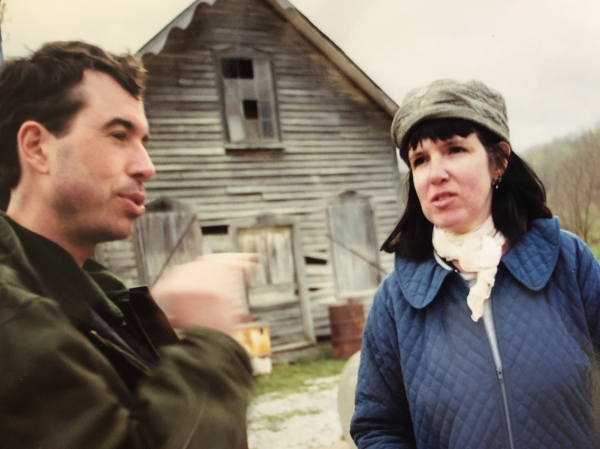
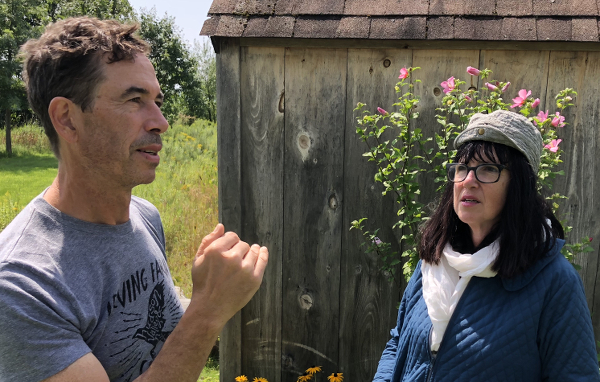
How do you put together a video for images like that? As before: intimately. It meant assembling old friends and newer friends – all generously giving their time and skills – and acting as if we had enrolled in some oddball summer art camp. One of them even had a drone! I enlisted Jim Denault, the D.P. from my first feature, A Good Baby, with whom I hadn’t worked in 20 years (that two-decade loop again), and we immediately slipped into our old shorthand, the kind of intuitive visual understanding that makes for a stellar experience with a cinematographer. (I enjoyed a similarly easeful symbiosis with David Morrison on Strange Weather and Michael McDonough on Diggers.)
We kept costs low by using what was ready-to-hand, in this case my house and land Upstate New York, full of things I had had built, collected, and planted, plus a nearby swamp. I had walked these locations both day and night. They were in my body, and so it was easy to place Sharon’s body within them – a strong, sinuous physical presence, moving in space with a different swagger and eloquence after bearing a child. I had watched that metamorphosis first-hand, and to me it felt embedded in the track. Basically, I took a song that felt like Sharon had both imagined and lived it, combined elements from my own experience, added Sharon as both a mesmerizing performer and a compelling, even sculptural, presence in space, then invited the viewer into a kind of shared fever dream, trying to never indicate anything too specific, because then the spell would be broken.
I didn’t even realize until I was deep into the process of making “Jupiter 4” how akin it was to another black-and-white video I had directed almost exactly 25 years earlier. (In “Jupiter 4,” Sharon sings of “echoing, echoing, echoing, echoing, echoing, echoing,” six whole echoes, and that resonance seemed to preside over and inform everything.) The earlier video was for “Your Ghost,” by Kristin Hersh, a singer-songwriter I had also revered from afar who became a friend, with backing vocals by Michael Stipe. He was the one who had gotten me into the whole music video gambit in the first place with R.E.M.’s “Stand” – a leap of faith, again, since I really had no clue what I was doing, but Michael trusted that somehow I would figure it out. “Your Ghost” was similarly rich to “Jupiter 4” with the sense of being possessed. A powerful female commands the narrative, confessing her experience about being overtaken by forces she doesn’t quite grasp, yet believes in completely, her fervor a form of conviction and faith.
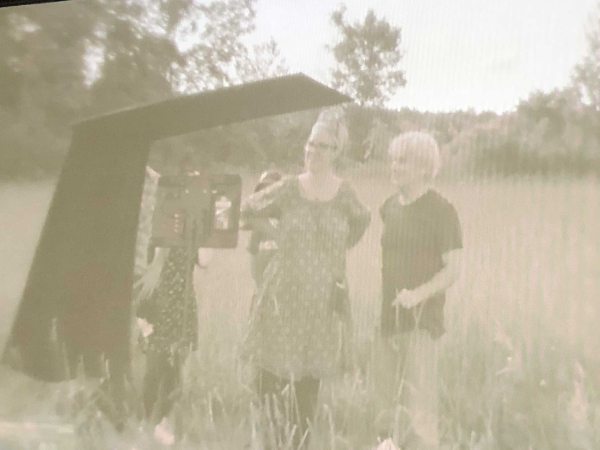
“Your Ghost” was also in a way informed by a certain morbidity – not long before we shot it, River Phoenix had died, and Stipe and I sat up late in his driveway in my old orange Volvo talking about that, since he and River had been very close. How to make sense of it? Where does such a strong connection go when a beloved physically disappears? Where do their traces remain? How do you live with them? The day after we wrapped that video, Kurt Cobain and Courtney Love came to Athens to visit Michael, and we all spent the day together. By the following spring, Kurt Cobain would be dead, too. Shortly after that, a mutual friend of mine and Michael’s who had loaned us her house as the location for “Your Ghost” would experience the suicide of her own son, and that event would eventually become the genesis for the screenplay for Strange Weather, which is how I wound up meeting Sharon. Loop upon loop.
Just a couple short weeks before I shot “Jupiter 4,” a dear girlfriend of mine named Betty died after a protracted battle with cancer. I sat with her in the days after she lost consciousness, as she held on tight to this world, clearly resistant to leaving its singular pleasures. When I returned home from those visits, I would wade into my pond, sometimes fully dressed, and float, watching the clouds moving across the sky, imagery that made its way into the video, although I am only figuring that out right this second. I also wound up using a favorite image Betty had helped to create with her photographer husband, Dudley Reed, of a battered old doll tucked in a wooden cradle in the rushes. It was just one of many images I had around my house when I asked Jim to shoot some B-roll while Sharon and I were out in a meadow with another friend, Alberto, filming with the drone – meaning there was no particular intention behind including it, and I didn’t even realize until I was editing how it resonated with what I had already devised.
I sat up late with Sharon after we wrapped “Jupiter 4,” drinking rye whiskey and smoking hand-rolled cigarettes on my front porch, probing the mysteries of overlapping existence, and how those mysteries weave themselves through everything, from childbirth to great passions to irrevocable losses. The making of “Jupiter 4” returned me to things that in some way I barely remembered existed — including the seemingly not-so-consequential but actually quite deep act of creating a music video simply, communally, lovingly. But, of course, all of that had been there all along, and it was as though Sharon’s song had, too. A woman is seeking, a woman is following, a woman is allowing indirection to become her own kind of direction.



